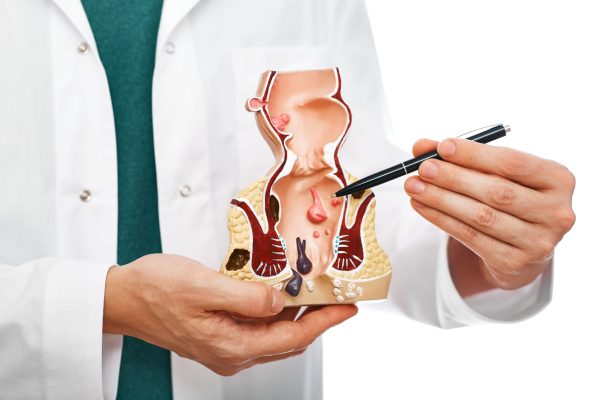Hemorrhoids and anal fissures are two conditions that can result in pain in the
Understanding Hemorrhoids
Hemorrhoids are swollen, inflamed veins found around the anus or the lower portion of the rectum. There are two main types of hemorrhoids:
- Those that form underneath the skin around the anal area, also known as internal hemorrhoids.
- Those that form within the lining of the anus and lower rectum, also known as external hemorrhoids.
Hemorrhoids can be present for a while before being detected (bleeding is a telltale sign). They occur when there is too much pressure on the veins near the anus and are usually caused by:
- Prolonged straining during bowel movements.
- Sitting on the toilet for extended periods of time.
- Recurring constipation.
- Recurring diarrhea.
- Not getting enough fiber in your diet.
- Weakened supportive tissues in the anus and rectum.
Symptoms such as anal pain and itching, lumps near the anus, and bleeding can indicate the presence of a hemorrhoid. These symptoms can be exacerbated by straining or vigorously rubbing or wiping near the anus.
Understanding Anal Fissures
Anal fissures are small tears in the moist, delicate tissue that lines the anus. They can affect individuals of all ages. Common causes of anal fissures include:
- Passing stools that are large or hard
- Constipation
- Straining during bowel movements
- Diarrhea that lasts a while
- Childbirth
If you are experiencing throbbing, lingering pain during or after bowel movements, bright red blood in stool, on toilet tissue, or in the toilet following bowel movements, you could have an anal fissure. Other signs include a visible crack in the skin surrounding the anus, or a small lump near the anal fissure.
Spotting the Difference
Anal fissures and hemorrhoids are often confused with one another. Unlike anal fissures, internal hemorrhoids may not cause pain unless they are prolapsed, which is when the hemorrhoid falls through the opening of the anus. If you suspect you have either or both of these conditions, an examination is necessary to determine the exact cause of your symptoms.
Treatment at Piedmont Colorectal
Hemorrhoids and anal fissures can sometimes be treated with at-home remedies. However, more advanced medical interventions may be needed in certain cases to help you heal. The experts at Piedmont Colorectal Associates understand that anal fissures and hemorrhoids can make you feel embarrassed and distressed. Our compassionate and skilled team is here to help you feel better and improve your quality of life. To schedule an examination, contact our office or book an appointment online today.

